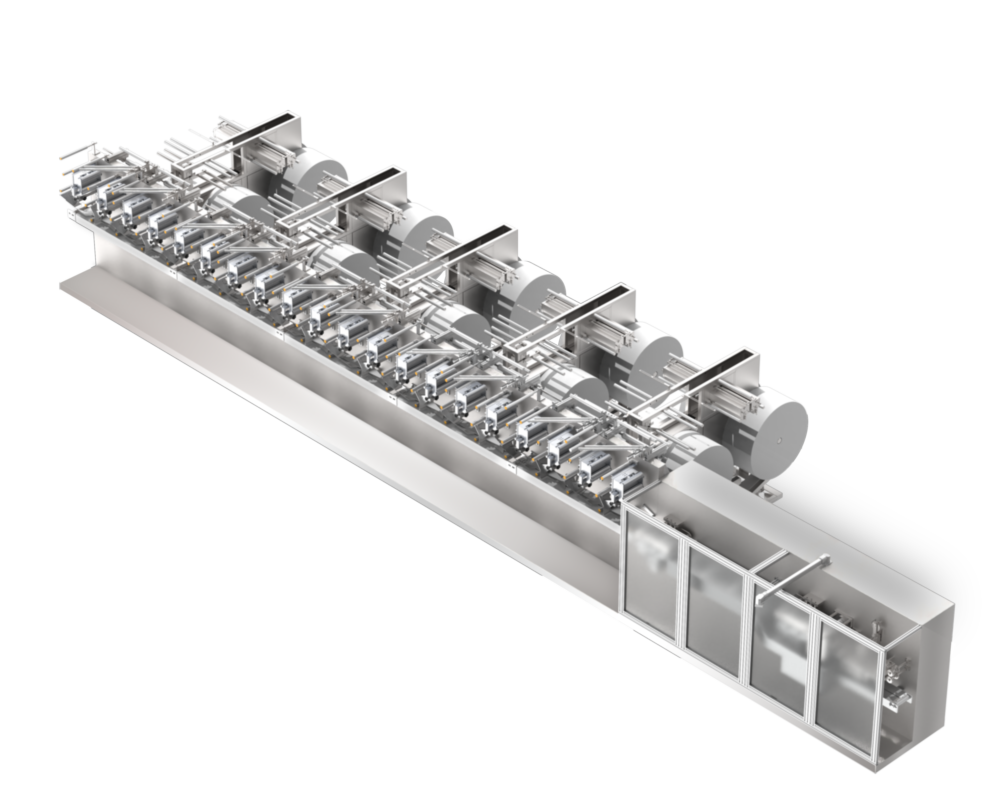When comparing towel folding machines from different brands, there are several factors to consider.
Here are some key factors to help you make an informed decision:
Folding Capacity: Assess the folding capacity of the machine, which refers to the number of towels it can fold per minute or hour. Consider your specific production requirements and choose a machine that can handle your desired workload efficiently.
Towel Size and Types: Consider the range of towel sizes and types that the machine can accommodate. Ensure that the machine is capable of folding the specific towel sizes you work with and can handle different fabric types and thicknesses effectively.
Folding Styles: Different machines offer various folding styles, such as tri-fold, bi-fold, or specialty folds. Determine the folding styles you require based on your industry and customer preferences, and select a machine that offers the desired fold configurations.
Automation and Ease of Use: Evaluate the level of automation and ease of use offered by the machine. Look for features such as intuitive control panels, programmable settings, and automation of feeding, folding, and stacking processes. User-friendly machines can enhance productivity and reduce training time.
Build Quality and Durability: Assess the build quality and durability of the machine. Look for robust construction, high-quality materials, and reliable components that can withstand continuous operation and heavy usage over time. A durable machine can minimize downtime and maintenance costs.
Maintenance and Serviceability: Consider the maintenance requirements and serviceability of the machine. Look for features that facilitate easy cleaning, routine maintenance, and access to critical components. Additionally, inquire about the availability of spare parts and the manufacturer’s customer support and service network.
Safety Features: Evaluate the safety features incorporated into the machine. Look for features such as emergency stop buttons, interlock systems, and sensors that prevent accidents and ensure operator safety.
Cost and Return on Investment (ROI): Compare the costs of different machines, including the initial purchase price, installation, and any additional accessories or options. Consider the potential return on investment based on increased productivity, labor savings, improved folding quality, and reduced material waste.
Reputation and Support: Research the reputation and track record of the brand and manufacturer. Look for customer reviews, testimonials, and references. towel folding machine Additionally, consider the availability of technical support, warranty coverage, and after-sales service provided by the manufacturer.
By considering these factors, you can make a well-informed decision when comparing towel folding machines from different brands. It’s recommended to gather detailed information, consult with suppliers or industry experts, and potentially request product demonstrations or trials to evaluate the suitability of the machines for your specific needs.
What are some common safety features that are important to look for in towel folding machines?
When evaluating towel folding machines for safety, it’s important to look for specific safety features. While the availability and design of safety features may vary among different machine models and manufacturers, here are some common safety features to consider:
Emergency Stop Button: An easily accessible emergency stop button allows operators to quickly halt the machine’s operation in the event of an emergency or unsafe condition. This feature provides a means to immediately stop the machine’s movement and prevent potential accidents.
Interlock Systems: Interlock systems ensure that certain safety conditions are met before the machine can operate. These systems may include safety switches or sensors that detect the proper positioning of guards, access doors, or other protective devices. If any safety component is not in place or properly secured, the interlock system prevents the machine from starting.
Safety Guards and Enclosures: Look for machines that incorporate safety guards and enclosures to prevent operators from accessing hazardous areas during operation. These guards should be designed to effectively prevent contact with moving parts, pinch points, or other potential hazards.
Sensors and Detection Systems: Towel folding machines may be equipped with sensors and detection systems to detect abnormalities, malfunctions, or potential safety hazards. These sensors can monitor parameters such as towel position, tension, or alignment, and can trigger automatic shut-off or alert operators to take corrective actions.
Overload Protection: Machines with overload protection features are designed to prevent damage or excessive strain on the machine’s components due to overloading or excessive torque. This feature can help prevent accidents and extend the lifespan of the machine.
User-Friendly Control Panel: A user-friendly control panel contributes to safety by providing clear instructions, visual indicators, and intuitive operation. It should be designed to minimize the risk of operator errors or confusion during machine setup, operation, or troubleshooting.
Lockout/Tagout Capability: Lockout/tagout capability allows authorized personnel to lock or tag the machine’s power source during maintenance or service activities. This ensures that the machine cannot be energized accidentally, providing an additional layer of protection for maintenance personnel.
Clear Safety Instructions and Labels: The machine should have clear safety instructions and labels that indicate potential hazards, operating procedures, and safety precautions. This information should be easily visible and understandable to operators.
It is important to note that these are general safety features, and the availability and design of safety features may vary among different towel folding machine models and manufacturers. It is advisable to consult the machine’s user manual, manufacturer, or supplier for specific safety information and to ensure compliance with local safety regulations and standards.
